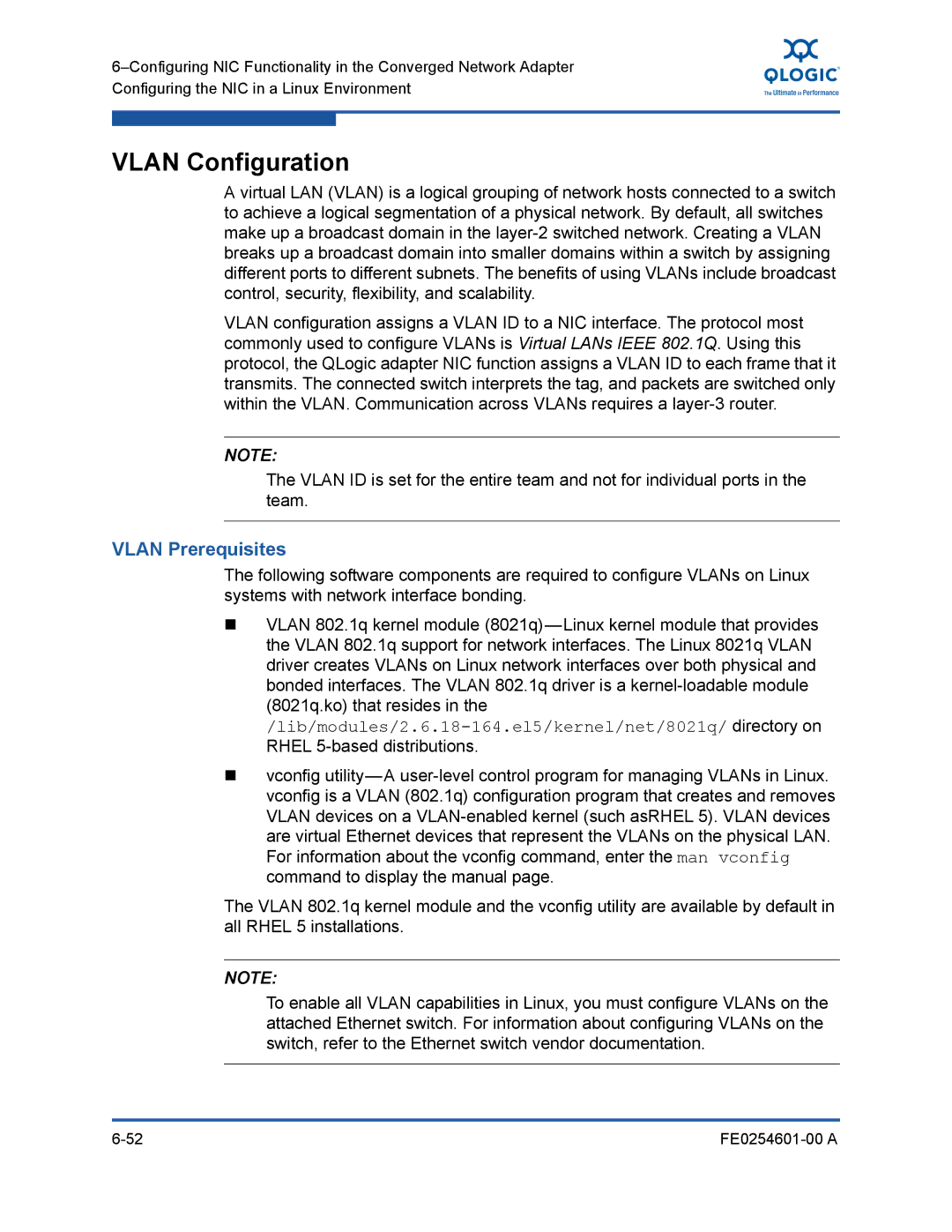
VLAN Configuration
A virtual LAN (VLAN) is a logical grouping of network hosts connected to a switch to achieve a logical segmentation of a physical network. By default, all switches make up a broadcast domain in the
VLAN configuration assigns a VLAN ID to a NIC interface. The protocol most commonly used to configure VLANs is Virtual LANs IEEE 802.1Q. Using this protocol, the QLogic adapter NIC function assigns a VLAN ID to each frame that it transmits. The connected switch interprets the tag, and packets are switched only within the VLAN. Communication across VLANs requires a
NOTE:
The VLAN ID is set for the entire team and not for individual ports in the team.
VLAN Prerequisites
The following software components are required to configure VLANs on Linux systems with network interface bonding.
VLAN 802.1q kernel module
vconfig
The VLAN 802.1q kernel module and the vconfig utility are available by default in all RHEL 5 installations.
NOTE:
To enable all VLAN capabilities in Linux, you must configure VLANs on the attached Ethernet switch. For information about configuring VLANs on the switch, refer to the Ethernet switch vendor documentation.
|
